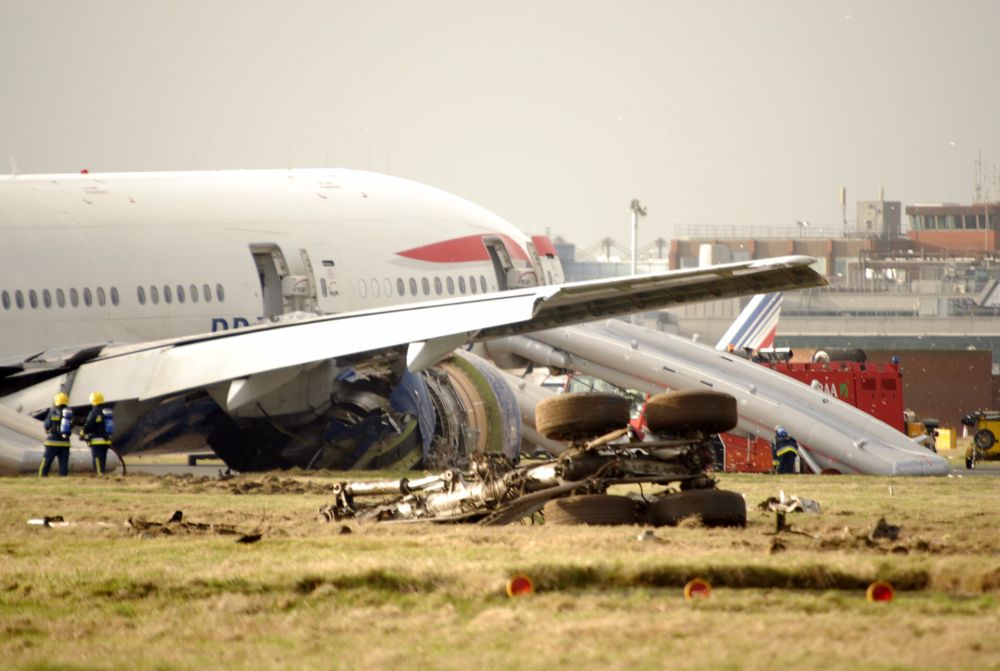Historical Context of Aviation Accidents in Brazil: Brazil Flight Crash

Brazil’s aviation history is intertwined with a complex narrative of growth, innovation, and unfortunately, a significant number of accidents. Understanding this historical context is crucial for appreciating the evolution of safety regulations and the ongoing efforts to improve aviation safety in the country.
Significant Aviation Accidents in Brazil, Brazil flight crash
The history of aviation in Brazil is marked by several tragic accidents that have left a lasting impact on the country’s aviation safety regulations and procedures. These accidents have spurred significant investigations, leading to the implementation of new safety measures and the development of stricter regulations.
- 1973 Varig Flight 820 Crash: This accident, involving a Boeing 707, occurred near Paris, France, claiming the lives of all 123 passengers and crew members. The investigation revealed that the crash was caused by a combination of factors, including a mechanical failure and pilot error. This accident led to significant changes in pilot training and aircraft maintenance protocols in Brazil.
- 1982 Rio-Sul Flight 402 Crash: This accident, involving a Fokker F27 Friendship, occurred near Rio de Janeiro, Brazil, killing all 43 people on board. The investigation revealed that the crash was caused by pilot error and a lack of proper communication between the pilots and air traffic control. This accident highlighted the importance of effective communication and coordination in the aviation industry.
- 1989 TAM Airlines Flight 402 Crash: This accident, involving a Fokker F27 Friendship, occurred near São Paulo, Brazil, killing all 44 people on board. The investigation revealed that the crash was caused by a combination of factors, including pilot error, mechanical failure, and a lack of proper maintenance. This accident underscored the need for rigorous aircraft maintenance and safety checks.
- 2006 Gol Transportes Aéreos Flight 1907 Crash: This accident, involving a Boeing 737-800, occurred near the Amazon rainforest, Brazil, killing all 154 people on board. The investigation revealed that the crash was caused by a collision with an Embraer Legacy 600 business jet, which was flying without transponder and had violated the rules of the air traffic control system. This accident led to the implementation of stricter regulations for air traffic control and the use of transponders.
- 2007 TAM Airlines Flight 3054 Crash: This accident, involving an Airbus A320, occurred at São Paulo’s Congonhas Airport, Brazil, killing 199 people. The investigation revealed that the crash was caused by a combination of factors, including pilot error, runway conditions, and a lack of proper safety procedures. This accident led to the implementation of new safety protocols and a review of the airport’s infrastructure.
Historical Factors Contributing to Aviation Accidents in Brazil
Several historical factors have contributed to the occurrence of aviation accidents in Brazil, including:
- Inadequate Infrastructure: In the past, Brazil’s aviation infrastructure, particularly in regional areas, was often inadequate, with limited navigational aids, outdated equipment, and insufficient air traffic control capacity. This could contribute to miscommunication, delays, and potential accidents.
- Lack of Standardized Training: Pilot training standards varied across different airlines and flight schools, leading to inconsistencies in pilot skills and knowledge. This could increase the risk of accidents due to pilot error.
- Weak Safety Regulations: In the past, aviation safety regulations in Brazil were not as stringent as in other countries. This could lead to a lack of oversight and enforcement, potentially contributing to accidents.
- Economic Pressures: In some cases, economic pressures on airlines could lead to compromises on safety standards, such as insufficient maintenance or inadequate pilot training, to reduce costs. This could ultimately increase the risk of accidents.
Evolution of Brazilian Aviation Safety
In response to the tragic accidents, the Brazilian aviation industry has undergone a significant transformation in terms of safety standards and technology. This evolution has been driven by a combination of factors, including:
- Strengthened Safety Regulations: The Brazilian government has implemented stricter safety regulations, including those related to pilot training, aircraft maintenance, and air traffic control. These regulations are aligned with international standards, aiming to improve aviation safety in the country.
- Technological Advancements: The adoption of modern technologies, such as advanced navigation systems, collision avoidance systems, and data recording devices, has significantly enhanced aviation safety in Brazil. These technologies provide pilots with more information and tools to make informed decisions, reducing the risk of accidents.
- Improved Training and Infrastructure: The Brazilian aviation industry has invested in improving pilot training programs, including standardized curricula, flight simulators, and advanced training facilities. Additionally, significant investments have been made in upgrading aviation infrastructure, including airports, navigation systems, and air traffic control facilities.
- Increased Safety Culture: The aviation industry in Brazil has fostered a strong safety culture, emphasizing the importance of reporting safety concerns, continuous improvement, and a commitment to safety as a core value. This culture has helped to create a safer environment for passengers and crew members.
The news of the Brazil flight crash is just… tragic, man. Like, seriously, it’s a reminder that life’s unpredictable, you know? Sometimes you just gotta chill out in your Lazy Boy chair, maybe with a good book and a cup of coffee, and appreciate the little things.
Speaking of Lazy Boys, have you seen those awesome side tables that go perfectly with them? They’re like the ultimate lazy-day companion. Anyway, back to the crash, it’s a real bummer. Just gotta keep reminding ourselves to be grateful for every moment, right?
The Brazil flight crash was a tragedy, a reminder that even with all our advancements, life can be incredibly fragile. It got me thinking about how we often take our everyday routines for granted, like sitting at our desks.
Did you know there’s a standard height of office table and chair that’s supposed to be ergonomic? Anyway, back to the Brazil flight crash, it’s a sobering event that makes you appreciate the little things, like having a comfortable chair to sit on.
